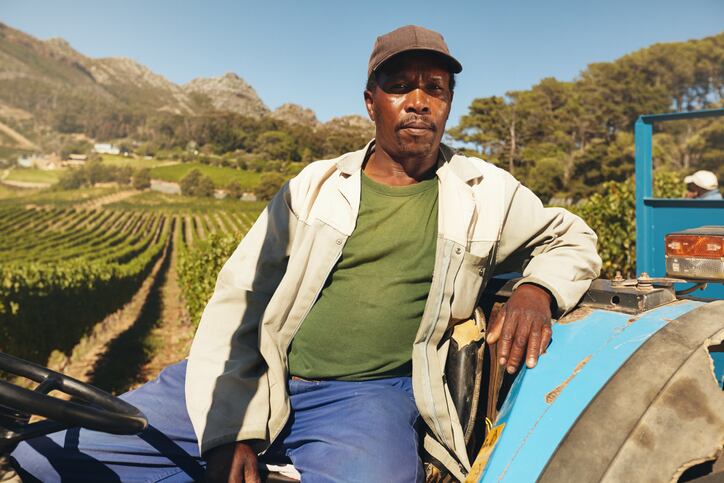The bold proclamations made at USDA’s 97th Agricultural Outlook Forum yesterday shined a light on deeply rooted challenges that have beset the food and agricultural industry for generations, but government representatives and legislators provided scant details about solutions or specific steps beyond those tied to the pandemic.
Indeed, reducing the threat of COVID-19 is “priority number one as the Biden and Harris administration team takes the helm at USDA” because it is foundational to meeting all other major social, political and administrative goals, Katharine Ferguson, chief of staff in the office of secretary at USDA, told attendees at the virtual conference.
“We cannot transform our food system; we cannot get our economy back on track; and we cannot rebuild rural America unless we contain COVID-19. The COVID-19 pandemic is wreaking havoc on our families, our communities and our economy,” she said.
To that end, Ferguson explained that USDA has deployed more than 300 people, including dozens of public health specialists from animal and plant health inspection services, to help establish and manage vaccine clinics. It also has committed cold chain infrastructure, disaster response specialists and players in rural and tribal communities across the country.
In addition, she noted, “We have extended an eviction and foreclosure moratorium to USDA multifamily housing residents through March 31st, 2021, providing relief to the tens of thousands of Americans who rely on USDA supported multi-family housing communities.
We announced the extension of eviction and foreclosure moratorium on USDA, single family housing direct and guaranteed loans through June 30th, 2021, that will bring relief to hundreds of thousands of Americans for USDA farm loan debt borrowers.
We suspended past due debt collections, foreclosures nonjudicial foreclosures that off-state or wage garnishments and referring for closures to the department of justice and us attorney's office. This relief will benefit 12,000 borrowers more than 25,000 of whom are truly disadvantaged.”
The department also has moved to alleviate food insecurity and hunger, which has spiked during the pandemic as unemployment has risen due to social distancing and safety restrictions.
“USDA increased the pandemic EBT by benefit by approximately 15% providing much more money for low-income families and millions of children missing meals due to school closures that provides an additional dollar per day, or as much as a hundred dollars per month for a family with three children,” Ferguson said.
Increasing equity and taking on structural racism
Beyond controlling the pandemic, Ferguson noted that new leadership at USDA is “committed to removing barriers to access and ending discriminatory practices, and building a food system that reflects the diversity of this nation.”
This includes creating and maintaining a marketplace that is open, fair and competitive “for small and medium sized producers, as it is for the big guys,” and leveling the playing field for access to capital, land and risk management, she said.
To do this, USDA must ensure there is equal and fair representation in how its programs are administered and demonstrate that it can do so effectively by providing senior executives the tools they need to succeed, and by looking closely at how contracts are administered to ensure that small business owners “have every opportunity to have an institutional customer, like the US Department of Agriculture,” said Oscar Gonzales, assistant secretary at USDA.
USDA also will weigh immigration reform, Gonzales said. “We know that what farmers and ranchers want more than anything is a workforce – employees who can turn on the lights and turn off the lights, to make sure things are getting done. We also believe that immigration reform can stimulate local economies, bringing hardworking men and women who have a mixed document status, allowing them to participate in the communities, to open small businesses, to be community leaders.”
Improving access to healthy nutrition
Increasing equity also will require directly addressing unequal access to nutritious, accessible food, Sara Bleich, senior advisor for COVID-19 with the Office of the Secretary at USDA, said.
“Today, one in seven households in America, and more than one in five Black and Latinx households, report that they do not have enough to eat. … The pandemic has made it clear that our current federal nutrition safety net, while strong, can do more to promote healthier diets and advance racial equity. It is also the case that simultaneously addressing hunger and poor nutrition is part of the long struggle against structural racism and poverty,” Bleich said.
She explained: “Black, Latinx and Native Americans, as well as people living in rural and lower income counties suffer the greatest disparities when it comes to the quality of their diet food insecurity and corresponding died from the conditions.”
But she added, “We need all people to be healthy, to have the most competitive economy in the world, and that starts with the food that we eat.
“So, how can USDA be helpful? Well, through our existing authorities and appropriations, we were able to provide food to underserved families and support the struggling producers. … We can work with Congress to pass COVID relief, which includes not only additional assistance for producers, but also nutrition assistance, and just to underline the American Rescue Plan calls for assistance for additional federal nutrition assistance to supplement what has already been made available.”
Addressing climate change
Just as the new leadership at USDA wants to ensure the health of those it serves, it want to improve the health of the planet – a process that will require engaging farmers and rural communities by removing the bullseye from their backs and empowering them to lead on climate smart solutions, Ferguson said.
“There is a lot of alignment between what we want to get done for the climate and agriculture and forestry, and we have enormous stewardship ethic in the United States among our working land owners,” Robert Bonnie, deputy chief of staff, policy and climate advisor in the Office of the Secretary at USDA, said.
He emphasized that the new administration wants to use incentives for voluntary adoption of climate smart practices and that it will reach out to stakeholders with more details and opportunities in the near future.
Finally, recognizing that much of the work behind these changes requires support of the rural community, the new administration is committed to improving broadband access across rural America to facilitate adoption of new techniques – as well as improve over living conditions.



